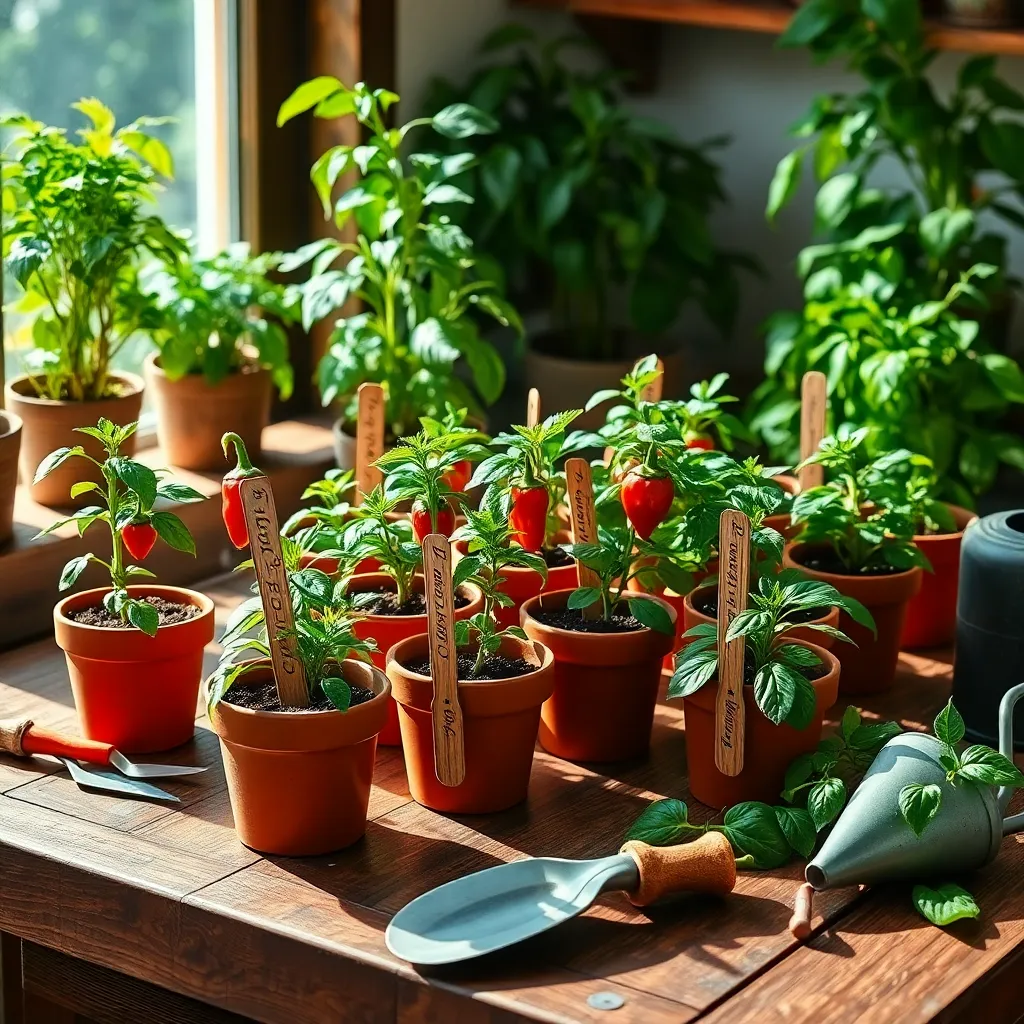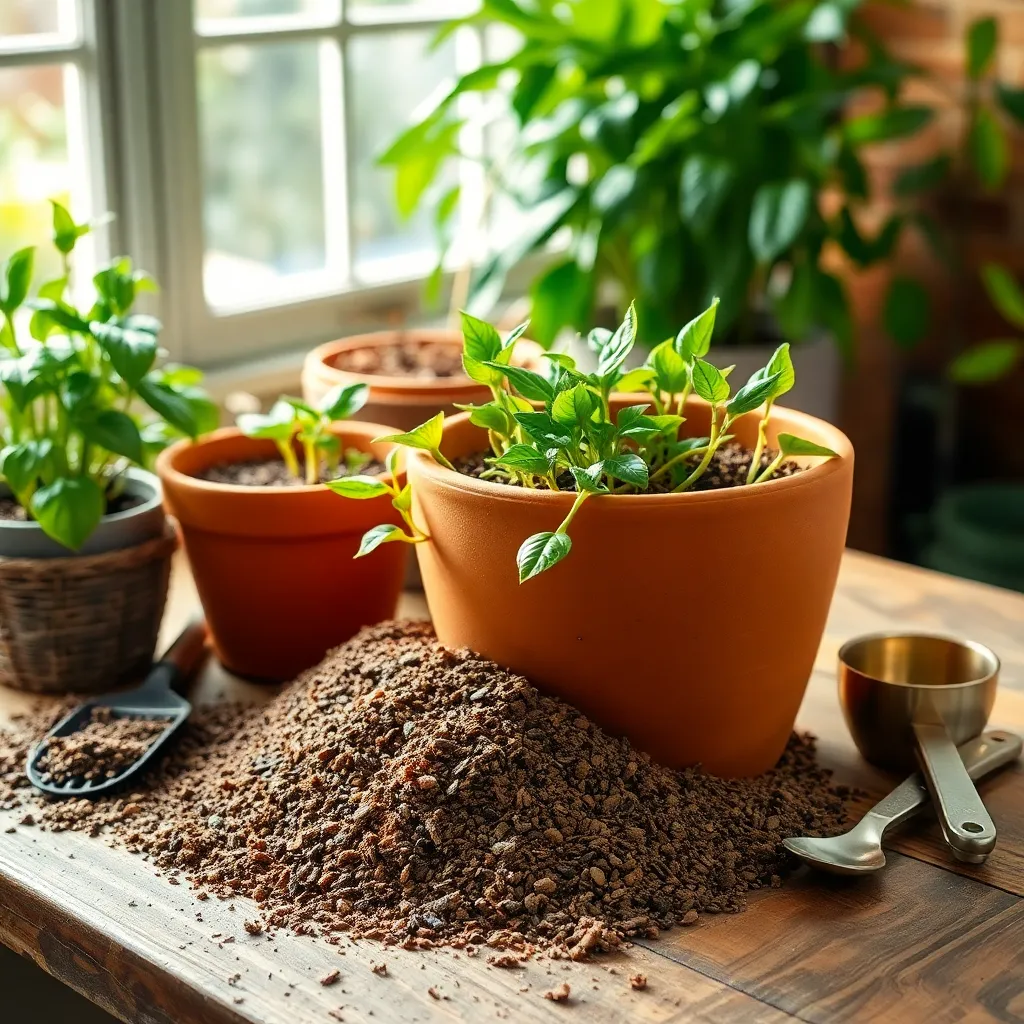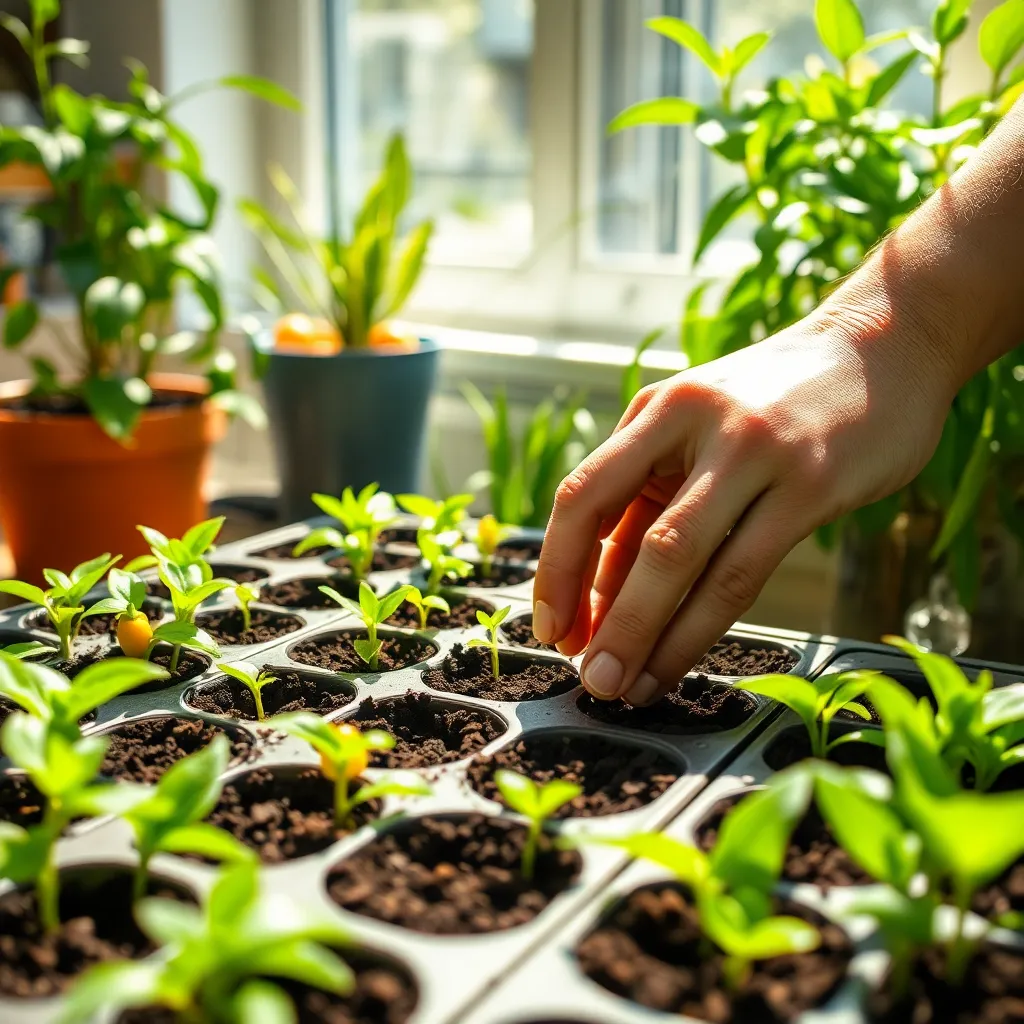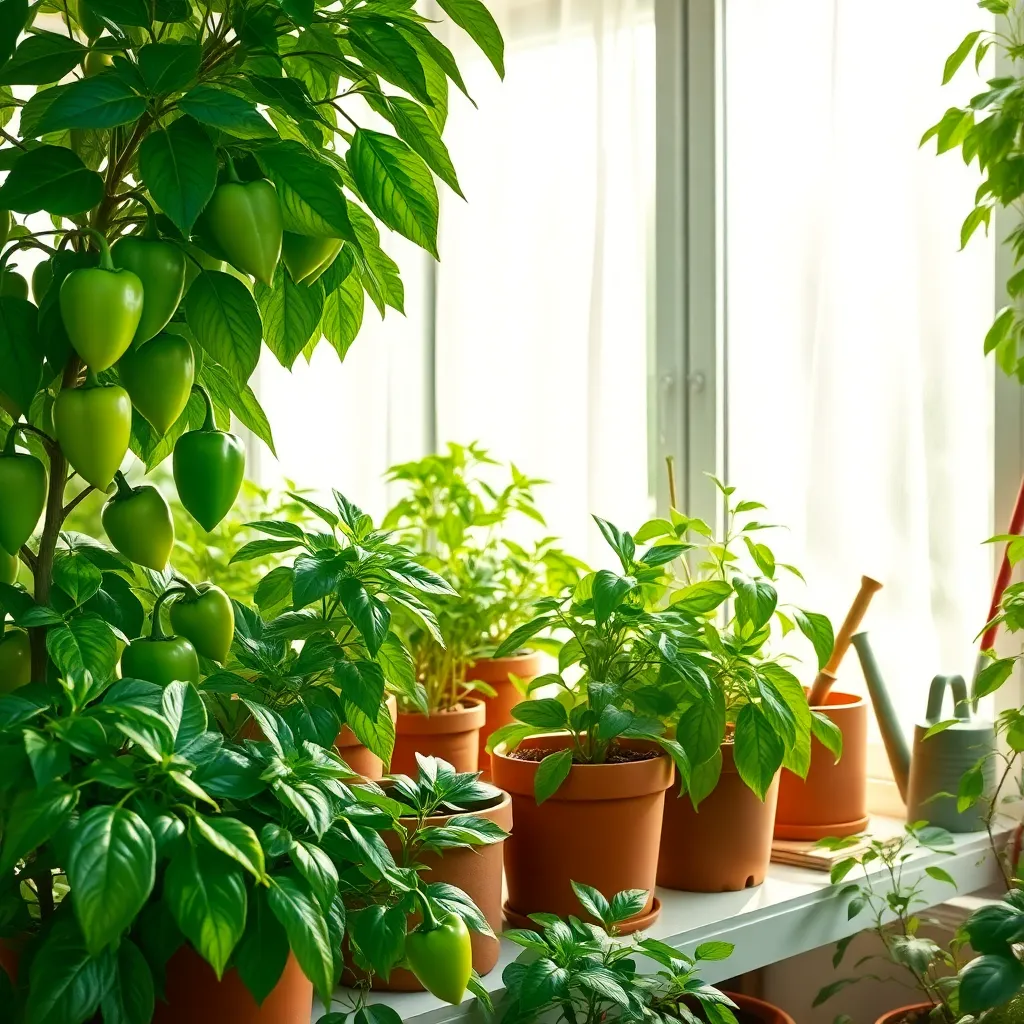In the world of gardening, few experiences are as rewarding as nurturing a pepper plant from seedling to harvest, especially when you’re doing it indoors. Whether you’re a beginner eager to bring a touch of nature into your home or an experienced gardener looking to expand your indoor plant repertoire, growing peppers inside offers a unique blend of challenge and satisfaction. Indoor pepper cultivation allows you to enjoy fresh produce year-round, regardless of the season, and provides a vibrant splash of color and life in your living space.
Peppers, with their array of colors and flavors, are not just a feast for the taste buds but also a delight for the eyes. Growing them indoors can seem daunting at first, but with the right guidance, anyone can turn their windowsill into a thriving pepper haven. In this article, you’ll discover the secrets to selecting the perfect pepper varieties, creating a conducive indoor environment, and mastering the art of watering and feeding. With our step-by-step approach, you’ll be well-equipped to enjoy a bountiful indoor harvest that will make your culinary creations shine.
Select Ideal Pepper Varieties

Choosing the right pepper varieties is crucial for successful indoor gardening. Sweet bell peppers and compact dwarf varieties are excellent choices for beginners due to their adaptability and manageable size.
Consider the space you have available, as some pepper plants can grow quite tall. Smaller varieties like ‘Jalapeño M’ or ‘Mini Bell’ thrive in indoor conditions and are perfect for pot cultivation.
It’s important to select varieties that are disease-resistant to minimize care issues. Look for descriptions such as ‘disease-resistant’ or ‘compact growth’ on seed packets, which are ideal traits for indoor growing.
For those looking for a challenge, try growing hot peppers like ‘Habanero’ or ‘Cayenne’. These varieties require slightly more attention, such as ensuring they receive adequate light and warmth, but they can be very rewarding.
Prepare Well-Draining Potting Mix

Creating a well-draining potting mix is crucial for the successful cultivation of peppers indoors. Peppers require a soil environment that allows for adequate moisture retention without becoming waterlogged, as excessive moisture can lead to root rot.
To prepare your potting mix, start with a base of high-quality potting soil. Ensure that the base soil is free from pests and diseases, which can be detrimental to the health of your pepper plants.
Incorporate materials that improve drainage, such as perlite or coarse sand, into the soil. These components help create air pockets, allowing roots to breathe and preventing compaction.
For a nutrient boost, consider adding a small amount of organic compost or worm castings. This addition will provide essential nutrients while supporting beneficial microorganisms that enhance soil health.
When watering your peppers, aim to keep the soil consistently moist but not soggy. It is wise to check the top inch of soil; if it feels dry, it’s time to water.
Advanced gardeners may experiment with mixing in coconut coir for improved water retention while still maintaining good drainage. This material can help regulate moisture levels, making it especially useful in dry indoor environments.
Plant Seeds at Correct Depth

When planting pepper seeds indoors, it’s crucial to plant them at the correct depth to ensure optimal germination. Generally, pepper seeds should be planted about 1/4 inch deep in the potting mix. This depth allows the seeds to access both moisture and warmth from the soil, which are essential for germination. If seeds are planted too deeply, they may struggle to reach the surface, while shallow planting can result in drying out.
Use a pencil or your finger to create small indentations in the soil for each seed. Place one seed in each indentation and gently cover it with soil, ensuring it’s firmly in contact with the surrounding mix. This contact is important because it allows the seed to absorb water effectively. For advanced gardeners, consider using a seed starting tray with cells, which helps maintain consistent depth and spacing.
After planting, water the seeds lightly, ensuring that the soil remains moist but not waterlogged. It’s helpful to cover the container with a clear plastic lid or wrap to retain humidity, which is crucial for seed germination. Remove the cover once you see the first signs of sprouting to prevent mold growth. Monitoring the moisture level daily will help you avoid overwatering, which is a common mistake when starting seeds indoors.
Consider providing gentle bottom heat using a heat mat, which can significantly improve germination rates for pepper seeds. Peppers thrive in warm conditions, and maintaining a soil temperature between 70-80°F can speed up the sprouting process. For those without a heat mat, placing the seed tray on top of a refrigerator or near a warm appliance can offer a similar effect. Remember, consistent warmth and moisture are key to successfully growing peppers from seed indoors.
Ensure Adequate Sunlight Exposure

Ensuring adequate sunlight exposure is crucial for growing healthy peppers indoors. Peppers thrive best in environments where they can receive at least 12 to 16 hours of light daily to simulate their natural growth conditions.
Position your pepper plants near a sunny window, preferably one facing south or west, to maximize light exposure. If natural light is insufficient, consider using full-spectrum grow lights to supplement their lighting needs.
It’s important to place grow lights approximately 6 to 12 inches above the plants to avoid burning the leaves while providing enough light intensity. Adjust the height of the grow lights as your peppers grow to maintain the ideal distance and ensure even light distribution.
For those looking to take their pepper growing to the next level, consider using a timer to automate the lighting schedule. This ensures that your peppers receive consistent light, promoting robust growth and fruitful yields.
Maintain Optimal Watering Routine

Watering peppers indoors involves more than just pouring water over the soil; it’s about understanding the plant’s needs. Peppers prefer a consistent moisture level, so aim to water when the top inch of soil feels dry to the touch.
Consider using a well-draining potting mix to prevent waterlogging, which can lead to root rot. A mix containing perlite or sand can improve drainage, ensuring your peppers thrive under your care.
It’s important to adjust your watering routine based on the plant’s growth stage. While young seedlings may require daily attention, mature plants typically need watering every 2-3 days, depending on humidity and temperature.
To ensure even moisture distribution, water your peppers until excess drains from the bottom of the pot. This practice not only helps the roots absorb water effectively but also prevents salt buildup in the soil, which can harm your plants over time.
Conclusion: Growing Success with These Plants
In nurturing the vibrant world of indoor pepper plants, we’ve uncovered five vital relationship concepts: understanding the needs of your plants, creating a nurturing environment, being patient and attentive, fostering growth through consistent care, and celebrating the fruits of your labor. These principles mirror the nurturing required in our human connections, emphasizing the importance of attentiveness, patience, and consistent effort.
As you embark on your indoor pepper-growing journey, consider integrating these concepts into your relationships. Begin by choosing one relationship in your life that could benefit from a little extra care and apply these nurturing principles. Whether it’s spending more quality time, actively listening, or simply expressing gratitude, taking a small step today can lead to flourishing relationships tomorrow.
Don’t forget to bookmark this article for easy access, ensuring these valuable insights are always at your fingertips. By saving this guide, you’re investing in both your gardening success and the strengthening of your personal connections.
Remember, just like a well-tended pepper plant, relationships thrive with care and attention. With each step you take, you’re cultivating a future of blooming relationships that will enrich your life for years to come.
